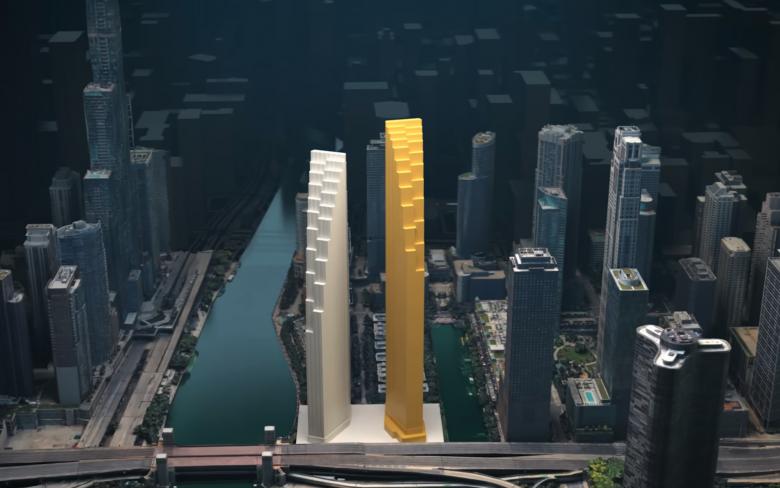The latest video from Stewart Hicks takes a deep dive into 400 Lake Shore, a pair of skyscrapers that recently broke ground in Chicago, focusing on how the architects at Skidmore, Owings & Merrill developed the form of the skyscrapers to address wind forces.
Even if readers don't know the 400 Lake Shore name, they probably know the site: it was the location of the Chicago Spire that Santiago Calatrava first proposed in 2005. If built, Calatrava's proposed tower would have reached a height of 2,000 feet (610 meters), its twisting form “reducing the impact of wind turbulence,” per the architect's website, and the irregularity of its exterior surface “[ensuring] that wind forces are reflected from the facade in multiple directions, rather than building up as a single force.”
Although each tower at 400 Lake Shore is less than 900 feet — or less than half the height of the Spire — the towers still need to take into account the same wind forces, and the architects at SOM addressed them similarly to Calatrava: with tapered forms and irregular terracing that confuses and makes the towers nearly invisible to the wind. Hicks visited SOM's office and spoke with Scott Duncan, Ryan Shultz, and Brad Young in this insightful video:

